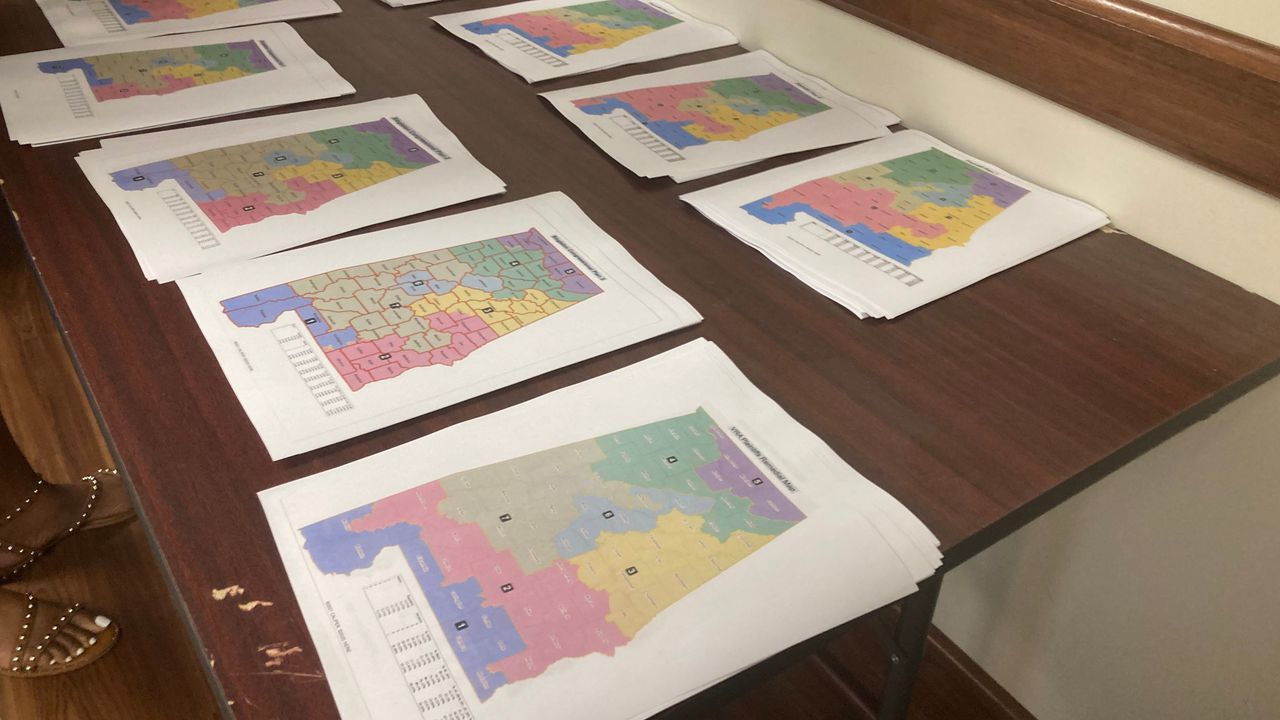Why is federal court redrawing Alabamaâs congressional map?
A three-judge federal court on Tuesday blocked Alabama from using its congressional district map in next year’s elections and ordered a special master and cartographer they appointed to draw a new map.
What was wrong with Alabama’s map?
Black residents make up one-fourth of Alabama’s population, but only one of the state’s seven congressional districts has a majority Black population; the other six range from 7% to 40% in Black voting age population. The judges ruled the map likely violates Section 2 of the Voting Rights Act.
Does the law require proportional representation for minorities?
Not necessarily. The judges said that to establish a Voting Rights Act violation, the voters who sued the state had to establish several factors spelled out in U.S. Supreme Court precedents:
- The Black population must be large and geographically compact enough to create a reasonably drawn second majority Black district.
- Black voters as a group are politically cohesive.
- The white majority votes as a bloc to defeat the Black voters’ preferred candidate.
- Finally, after meeting those preconditions, the plaintiffs must show that under the totality of circumstances, Black voters have less opportunity than other Alabamians to elect a representative of their choice. Among those circumstances are the history of voting-related discrimination in the state and whether voting in the state is racially polarized.
The judges said the plaintiffs met all those conditions and are likely to succeed on the Voting Rights Act claim.
Why is Alabama being accused of defying the Supreme Court?
The case started with voters and organizations suing to block the map the Legislature passed in 2021. That map, similar to three previous maps Alabama has used since 1992, had six heavily white districts and one majority Black district.
The three-judge court ruled last year that the 2021 map likely violated the Voting Rights Act. The judges said the remedy was a second majority Black district or “something quite close to it,” a second district that gives Black voters an opportunity to elect a candidate of their choice.
The U.S. Supreme Court affirmed that ruling on a 5-4 vote in June.
In July, the Republican-controlled Legislature passed its new map, the one before the court now, to replace the 2021 map.
But the state’s lawyers have admitted that it does not create a second opportunity district for Black voters as directed by the court.
State Solicitor General Edmund LaCour told the judges at an August 14 hearing the new map complies with the Voting Rights Act even though it does not create a second opportunity district.
Who will draw the court’s map?
The court appointed Richard Allen, who is a former chief deputy under four Republican Alabama attorneys general, as the special master. The court picked as its cartographer David Ely, who has served as a map-drawer and consultant for legislatures in Texas, California, Utah, Pennsylvania, Ohio, Massachusetts, and Illinois and was special master in a federal court redistricting case in Louisiana. The judges appointed Michael Scodro, a partner in the Chicago office of the law firm Mayer Brown, to assist Allen.
None of the parties in the case objected to the court’s choices.
What districts are likely to change?
On the Legislature’s new map, as on every map used since 1992, District 7 in west Alabama has been the only majority Black district. It is represented by Congresswoman Terri Sewell, D-Birmingham.
The court ordered the special master and his team to submit three proposed maps that would have a second Black majority district or opportunity district.
Maps submitted by the plaintiffs in the case would change District 2, which covers southeast Alabama, to a majority Black district, partly by extending it westward and incorporating a majority Black portion of Mobile County. District 2 is represented by Congressman Barry Moore of Enterprise, one of six Republicans in Alabama’s delegation.
A plan submitted by a group of plaintiffs led by Senate Minority Leader Bobby Singleton would make District 6 in central Alabama a second Black opportunity district by including all of Jefferson County, where Democrats have fared better with white voters than in most of the state.
Who are the three judges?
Circuit Judge Stanley Marcus, appointed by President Clinton, District Judge Anna Manasco, appointed by President Trump, and District Judge Terry Moorer, appointed by President Trump.
When will the new map be ready?
The court ordered the special master and his team to submit their three proposed maps by Sept. 25. Parties in the case and others will have three days to file objections. The judges have scheduled a hearing for Oct. 3 at the federal courthouse in Birmingham.
Secretary of State Wes Allen has told the court the new map needs to be ready by early October to prepare for next year’s election.
Will the three judges have the final say?
The state’s lawyers have told the court they will ask the U.S. Supreme Court on Thursday to issue a stay, or put a hold on the ruling, while they can pursue an appeal.
What is a key takeaway?
So far, Alabama is 0-for-3 in the biggest decisions on the merits of the case.
- The three-judge court blocked the 2021 plan last year as a likely violation of the Voting Rights Act.
- The Supreme Court affirmed that decision in June.
- The three-judge court ruled the 2023 map failed to fix the Voting Rights Act violation.
In the ruling Tuesday, the judges said the state’s assertion that its map complied with the Voting Rights Act even though it did not create a second Black opportunity district, as the court instructed, was pivotal.
“That concession controls the case,” they wrote.
It indicates the state is banking its chances on convincing one of the justices on the U.S. Supreme Court, which ruled 5-4 against the state in June, to change their vote.
